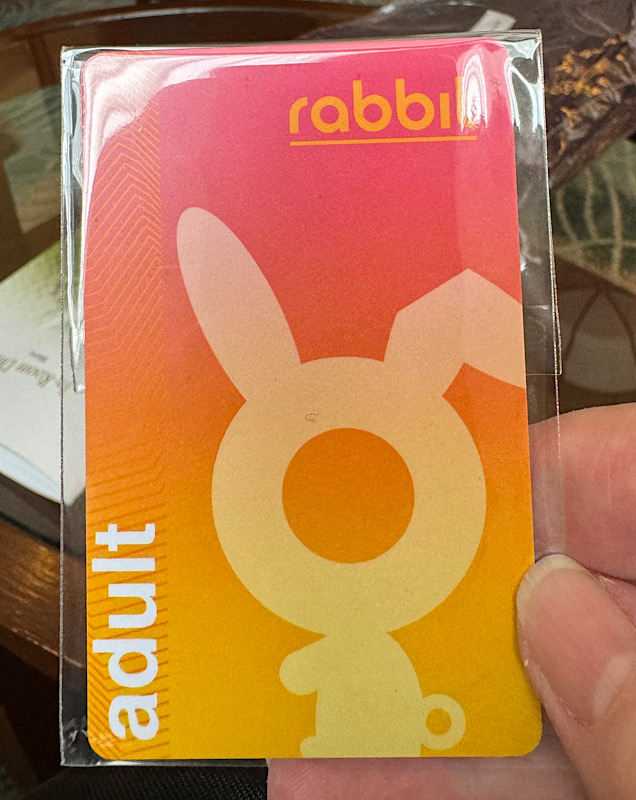Found ourselves with a free morning to do some sightseeing before the work all starts up tomorrow, and decided to book a canal tour. Bangkok is divided into east and west by the Chao Phraya River, and connecting to this ‘lifeblood of the city’ river are myriads of canals that weave through heavily populated areas of the very wealthy and very poor alike. The canals are used extensively for general transportation, with various sized boats zooming down the canals carrying locals, construction workers, city sanitation services, tourists and who knows who else. The water is a murky filth pit – filled with floating rubbish, and the occasional floating dead fish… thankfully the breezes on the river are strong and kept the odours away – being as it was high tide probably helped too! We had about five hours pottering about on the canal with multiple stops and I took plenty of photos, but some of this felt like slum tourism (which I absolutely hate!) so sorry, but there’s very little photos of the run down decrepit and falling apart houses that some of these residents are living in, right next door to palatial marble clad homes with private water slides going into their private pools.
We started off our canal trip meeting at a temple. This statue outside the first of many temples we came across today, honours the King from the King And I, King Mongkok of Siam, who is very famous and was responsible for trying to modernise his country. Our guide Mr Tee set the tone early by cracking jokes and asking us where we were from – he is far more familiar and comfortable using Aussie ockerisms than I am! Probably didn’t help that Shannon (one of Yale’s colleagues who was with us) almost immediately started pumping him to improve his Thai naughty/dirty vocabulary.

Right alongside the statue to this most illustrious king was a small shrine to Buddha with this huge pink water buffalo… our guide Mr Tee, like I said, full of jokes and quips, was unable to tell me why there was a pink water buffalo placed seemingly out front to protect Buddha, so this is destined to remain a mystery.
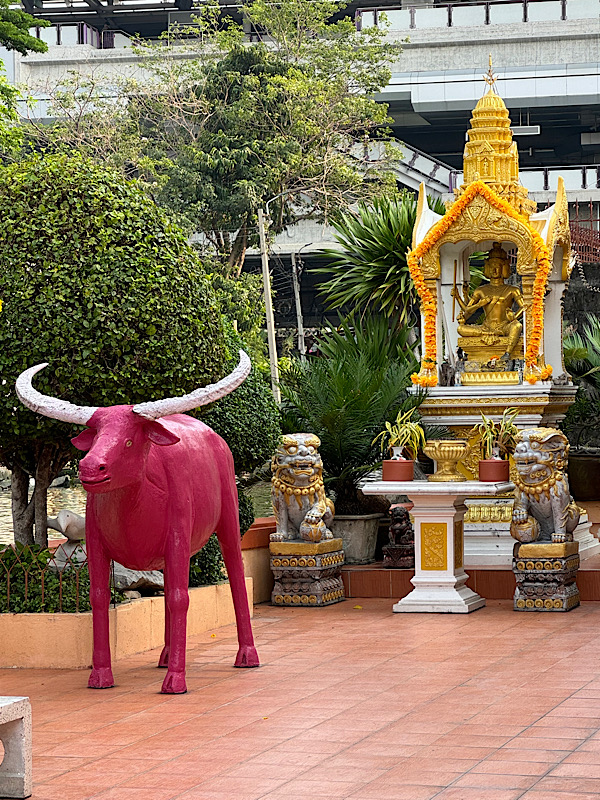
Oddly, I took plenty of pics of the canal boats, but failed to get a picture of the one we were travelling in. It was a small boat as we were on a private tour for just three pax, but it meant we were able to get into some of the smaller canals. It isn’t suitable to go into the Chao Phyara River as it wouldn’t survive the wakes from the larger vessels.
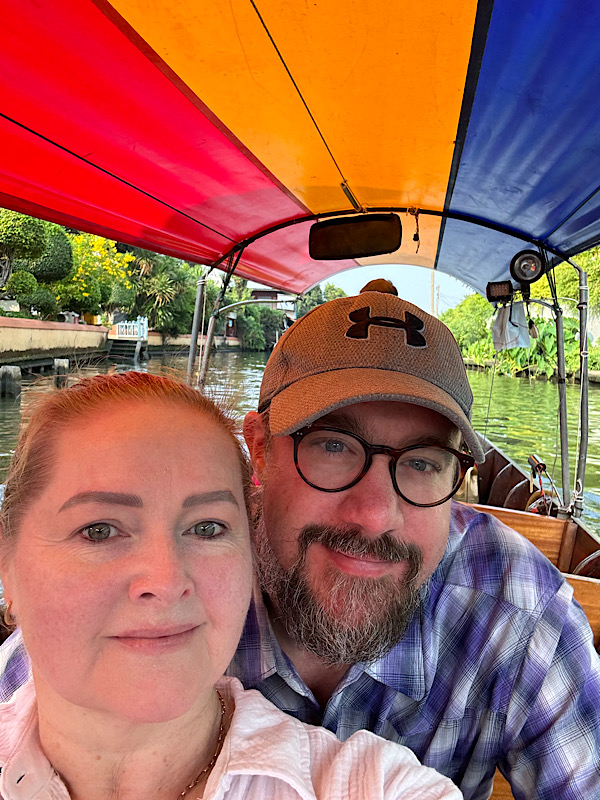
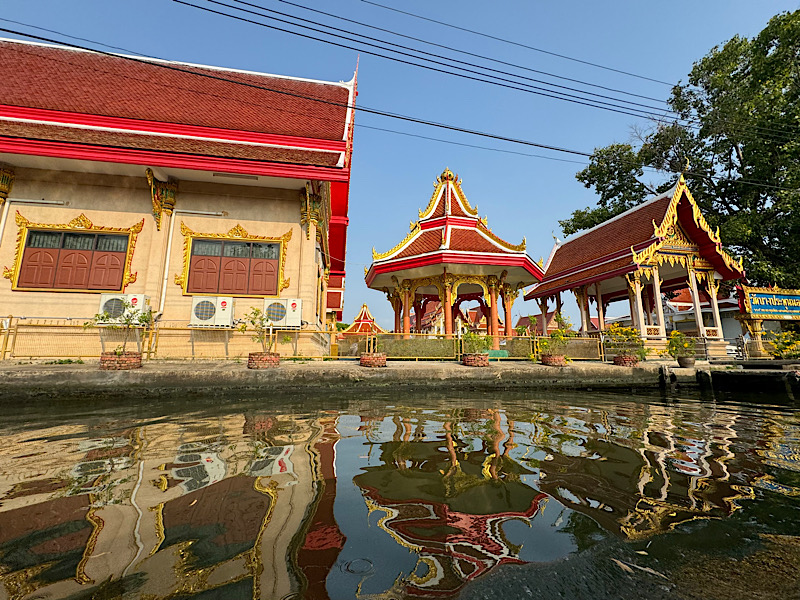
We went past so many small temples which seemed to line the canals. According to Mr Tee, every community has their own temple because no one wants to have to go pray too far from home. Bangkok has over 700 temples, and Thailand has over 35,000 temples – so they are literally everywhere. Small and modest and huge and ornate… just dotted all over the place. All of them are built with community funds, and in the great tradition of religious monuments, churches, and temples the world over – it’s mostly all donated funds given to aggrandise certain families, communities or even just individuals. Small funereal monuments here can cost approximately USD$1000 which is a LOT of money for the average Thai citizen. As such, cremation is popular and urns are kept at home or put into a community funereal monument (some pics of those a bit later).
Below is someone who lives onto the canal who cares enough, and has the financial resources, to maintain their home. This Angry Bird House is a bit of a local landmark apparently.
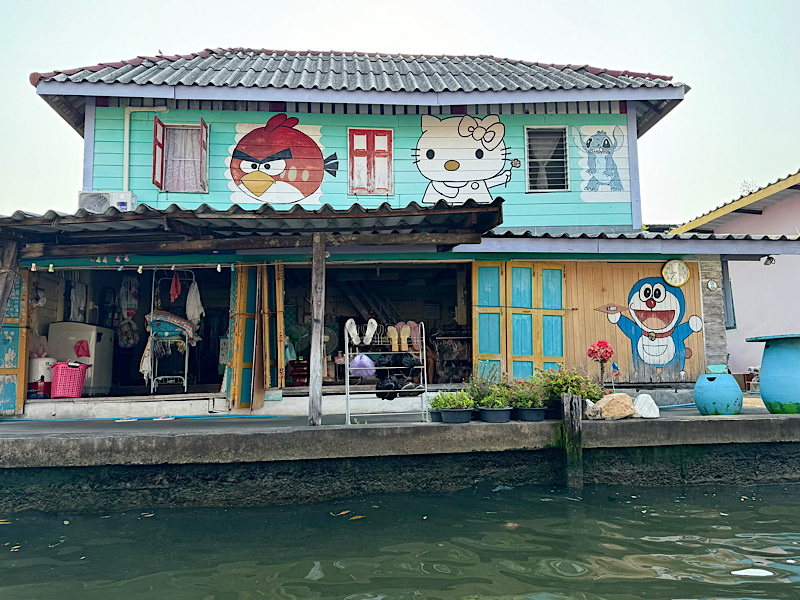
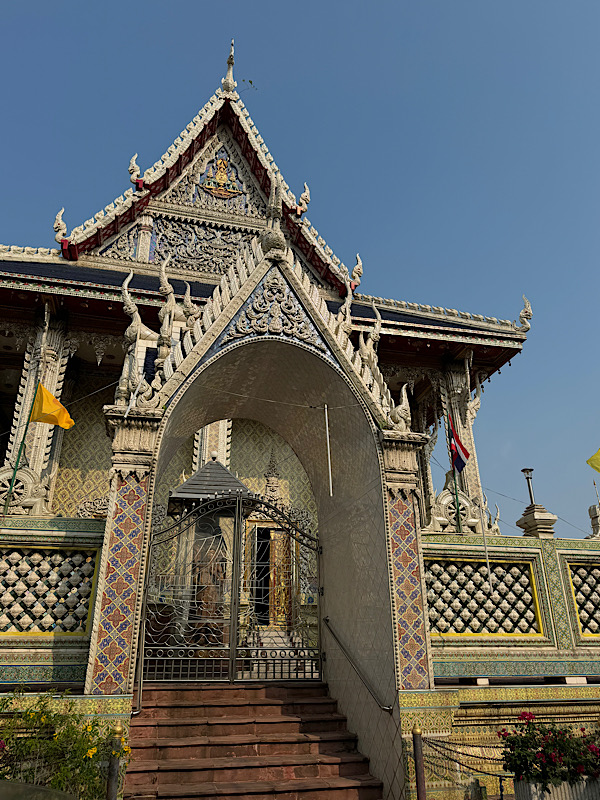
This community near the Morning Markets has beautifully tiled facades with the tiles all donated by local families – much like plaques are used in other religions to show patronage. Some of the temples are covered in beautiful work – though some of the super shiny, opalescent, or mirrored tiles feel a little over the top to our Western aesthetic sensibilities.
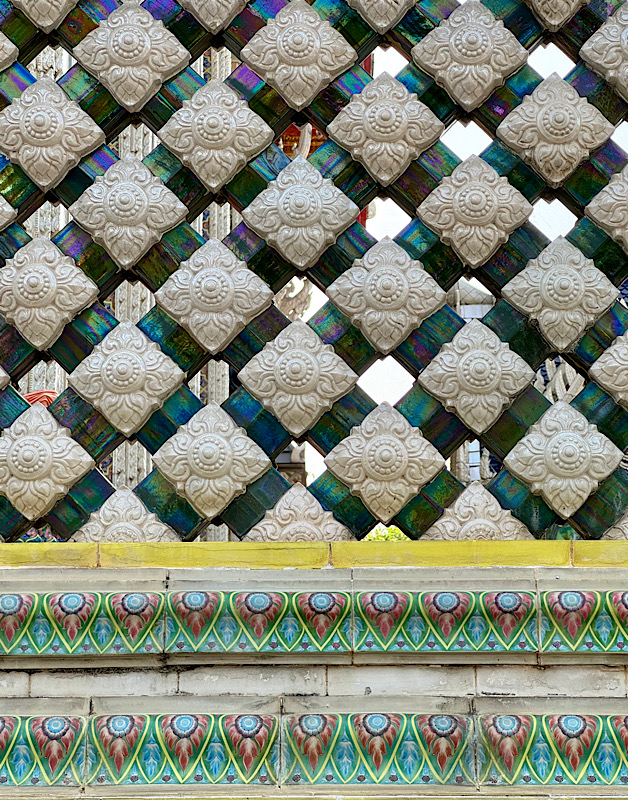
We did go for a wander through the Morning Markets after visiting this little temple, but the experience was underwhelming. Mr Tee said that the government had outlawed street stalls on Mondays (???) which meant the markets were remarkably quiet on Mondays. There were vendors there selling fresh food, fruits, seafood, spices, pre-made curry and chili pastes, loads of coconut products and general groceries – but the place wasn’t bustling like I’ve seen markets in Marakecch or Seoul or China. It was sedate and kinda sleepy with about 4 out of every 5 stalls empty. I could have done without the trip through the fishy part of the market – it fucking reeked. First time I’ve been in a fresh fish market like that which smelled so bad.
Anyway, I’m off topic – in the temple grounds and in many people’s private properties, you will see these little spirit houses that are placed to protect the home and its occupants. Some homes have two, one for the house and one for the people, but many have just one.
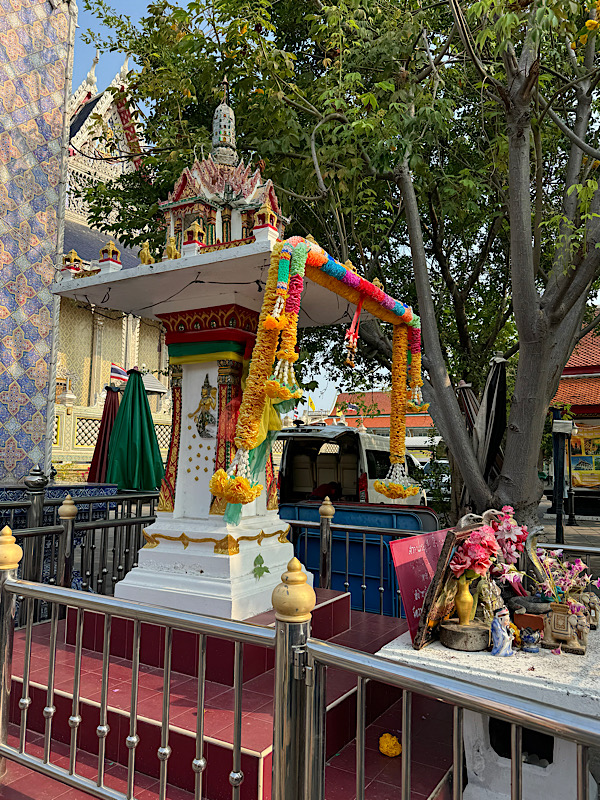
Beside is a small altar space where small offerings are left – food, tokens, flowers, idols and incense seem to be popular. I have no idea what they’re snakes are about.
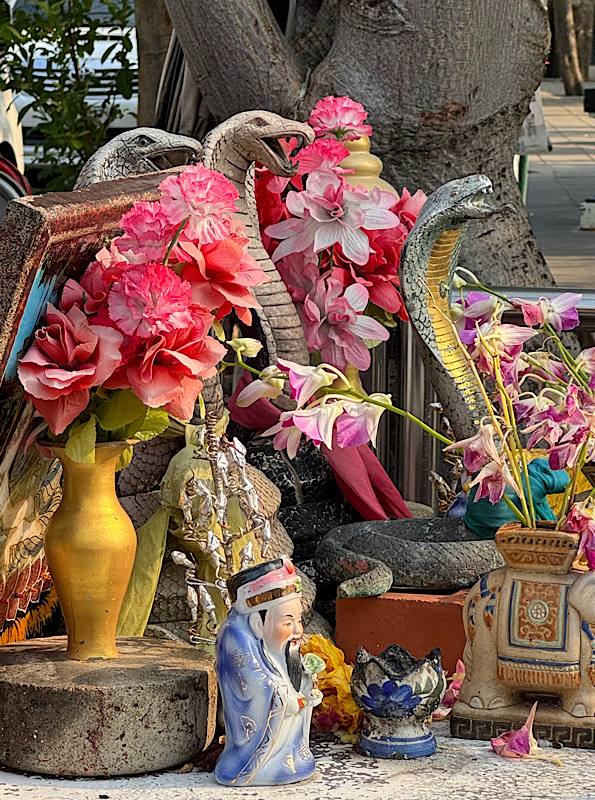
Not only are the temples lavishly and brightly decorated, but the canal boats that are ferrying many tourists about are also festooned with bright garlands to ask the spirits to protect the vessel.
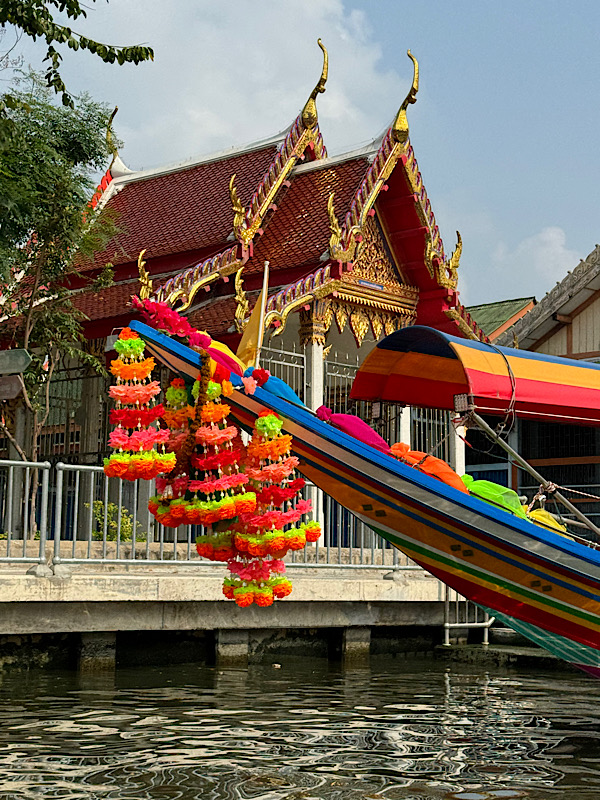
Below is a funereal monument built to acknowledge and commemorate one particular monk who was very well known in his community. Mr Tee told us that when people in the community die, they can have their ashes interred into these established monuments and depending how important they are is how high up the monument their ashes will be placed. It’s not a ‘being closer to heavens or the gods’ thing, it’s literally how important you were considered to be in this life – importance that seems to be gauged by wealth and status rather than godliness from what I could make out?
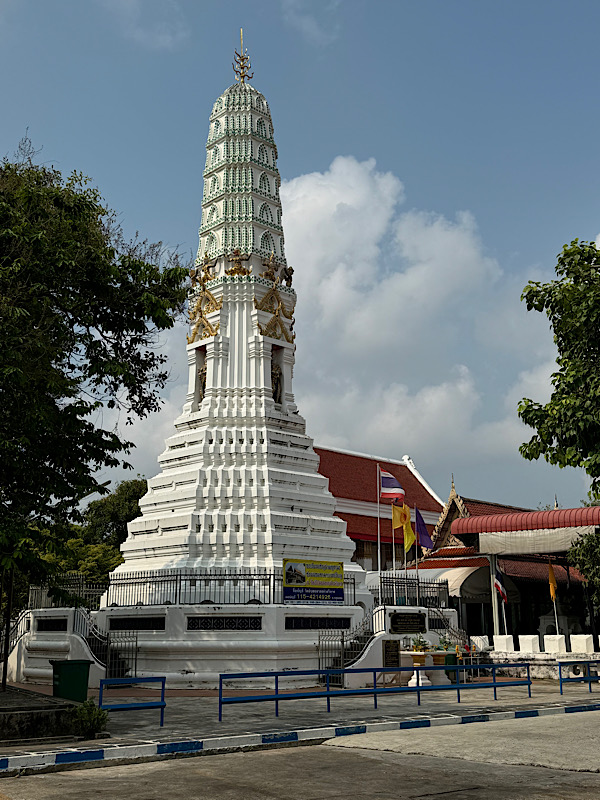
The design of these funereal temples is a combination of a round structure of Ceylonese influence, a corners cut in with those wedges shapes, which is the Thai/Siamese influence, and the upside down ice cream cone which stems from Cambodia.
A short walk from this little funereal temple, we got our first look at the Big Buddha.
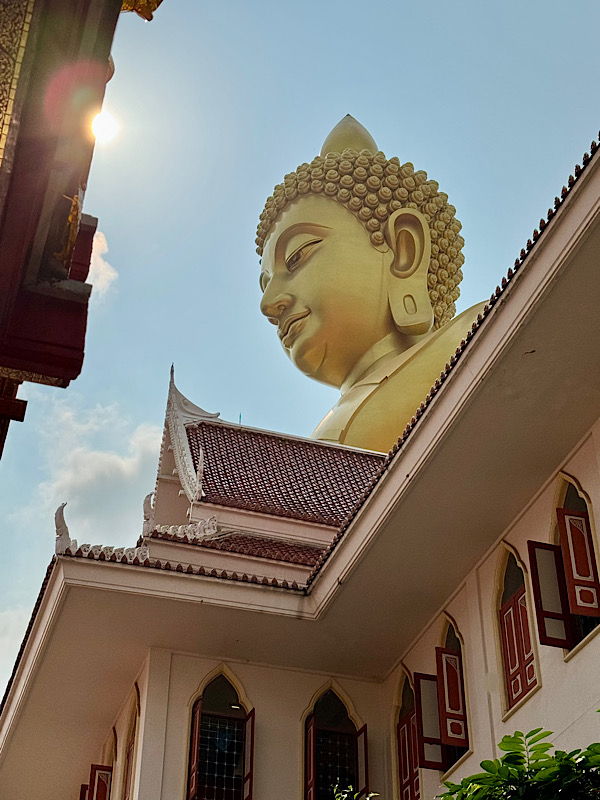
Towering nearly 70 meters above the ground, and roughly the height of a 20-story building and at a width of 40 meters, it is the city’s biggest Buddha image… and it is situated directly across the canal from what is now called ‘Small Buddha’ but which was called, ‘Big Buddha’ until this enormous monument was finished a couple of years ago. Construction started on this Big Buddha in 2012, but was hindered somewhat from completion due to a total shut down of works during the Covid pandemic so it was only completed about two years ago. It’s huge and impressive but the scale is hard to capture in a picture like this.
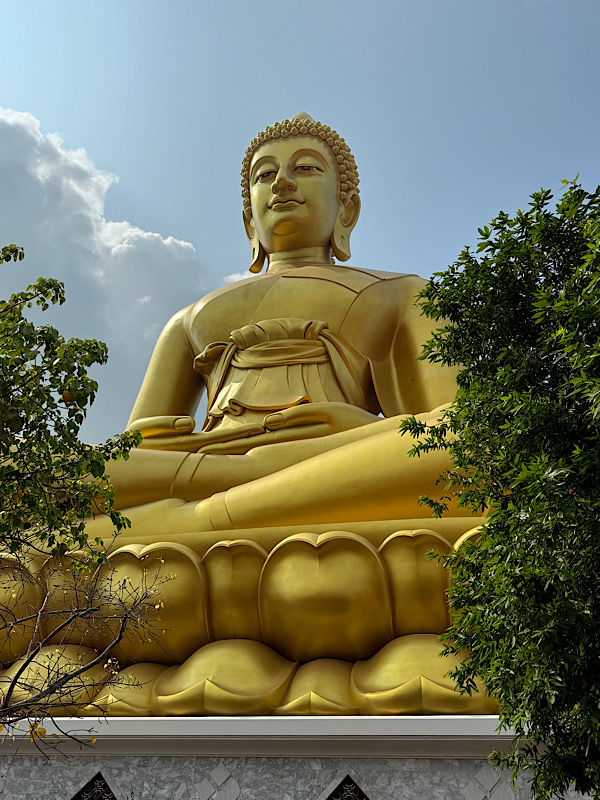
Near the Big Buddha are some other small temple buildings, novice schools for monks in training and a huge funereal temple which houses a museum-like collection of religious artefacts.
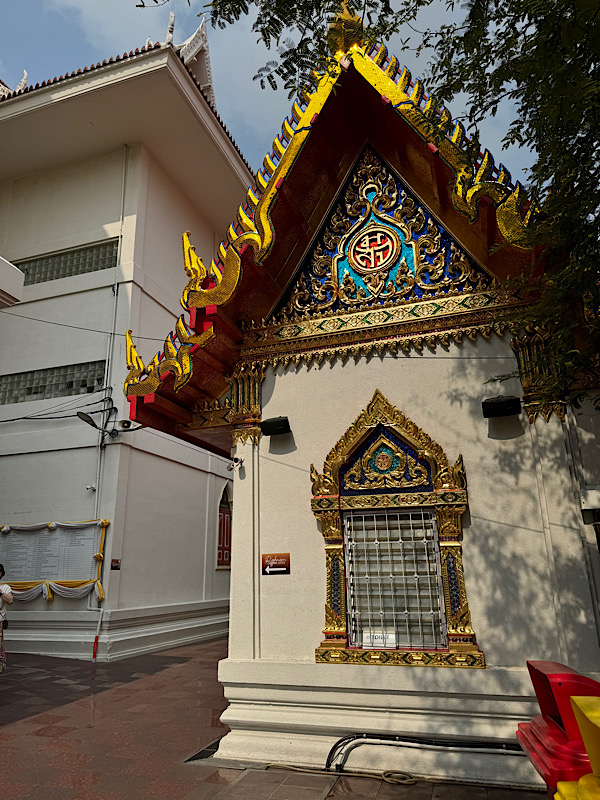
Leading to the temple/museum is a walkway that has a schedule of all the upcoming funerals being held at this temple. Seems it is one of the most popular places now to have your funeral.
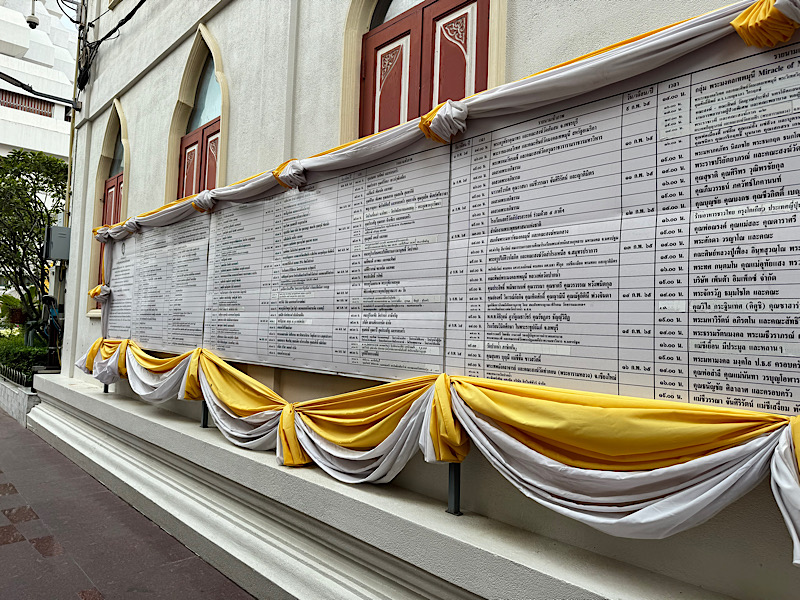
The temple itself is also quite high – about five stories tall. You can walk all the way up to the roof via a wide marble staircase, but there is also a lift inside (to the right of the entrance staircase) which only operates on weekdays.
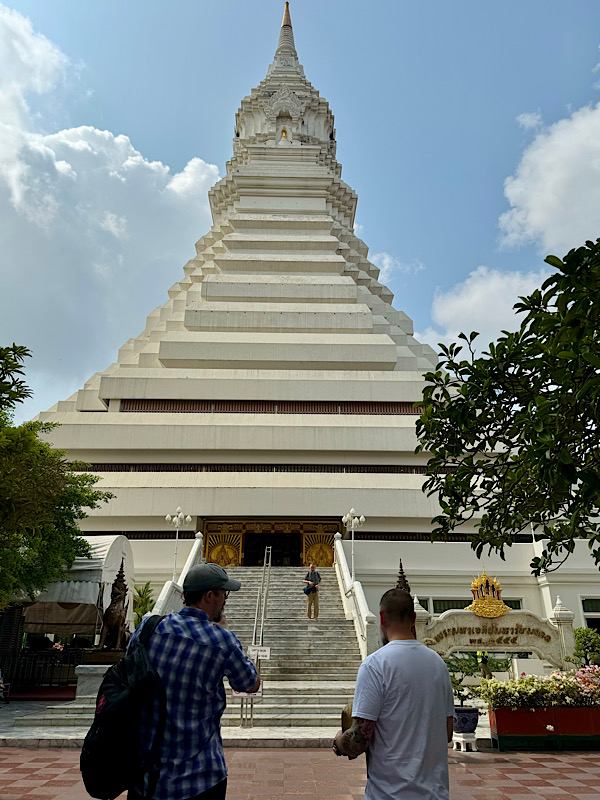
Shoes off, once inside the temple there was over the top decorative arts as far as the eye could see – elaborately carved and gilded timber columns, each column with a mother of pearl inlaid grandfather clock beside them, hand painted ceilings in lavish red and gold paint, and cabinet after cabinet of displays of everything from money, to medals, to watches and old photographs.
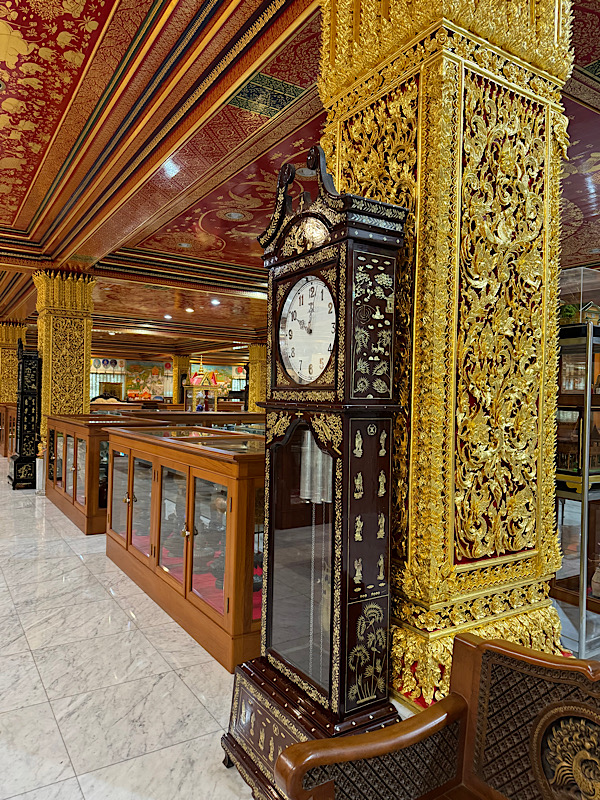
Many of the displays here were set up in huge dioramas, but unfortunately, I couldn’t translate any of the information panels.
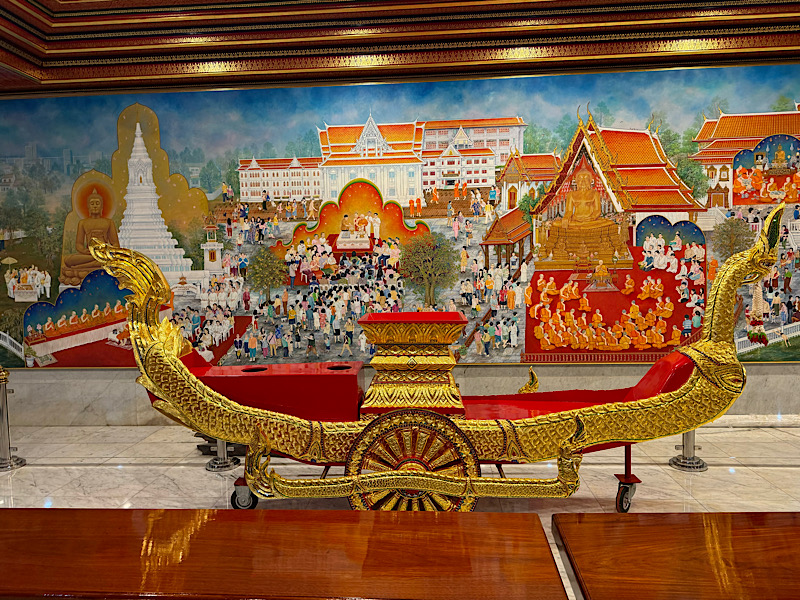
Then we went up the lift to the fifth floor to see the ‘main attraction’. We were told this temple cost USD$23,000,000 dollars to build. And this floor alone was half of that expense. The elaborate paintings that encircled the jade glass temple in the centre of the room were all painted by one artist who was commissioned to do them all so that they would be identical.
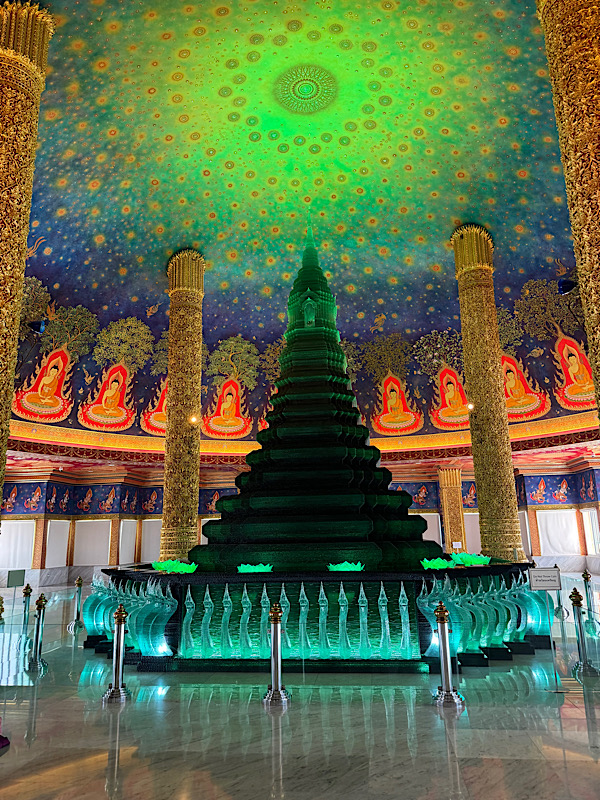
I totally didn’t expect to see this inside this temple at all – there are some benefits to planning a trip at the last minute and not researching the hell out of everything! Also helped that for the first time in forever, someone else planned this particular outing.
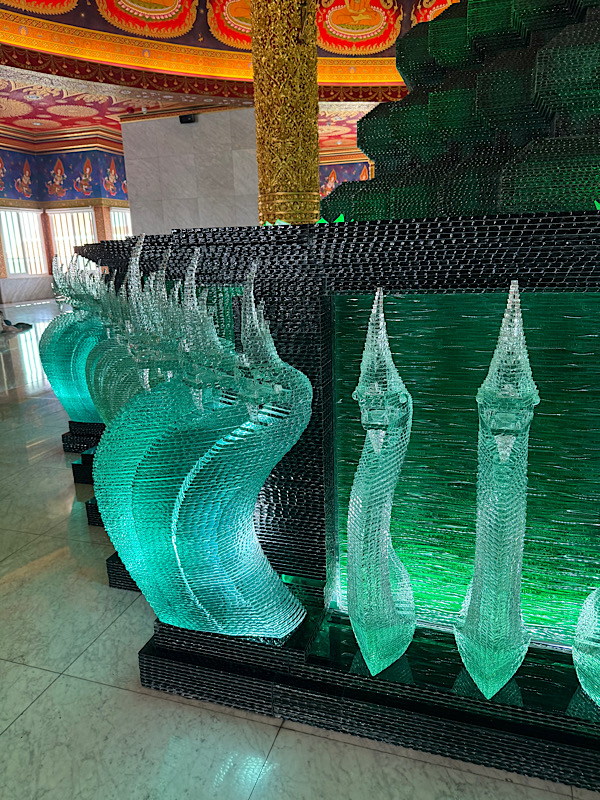
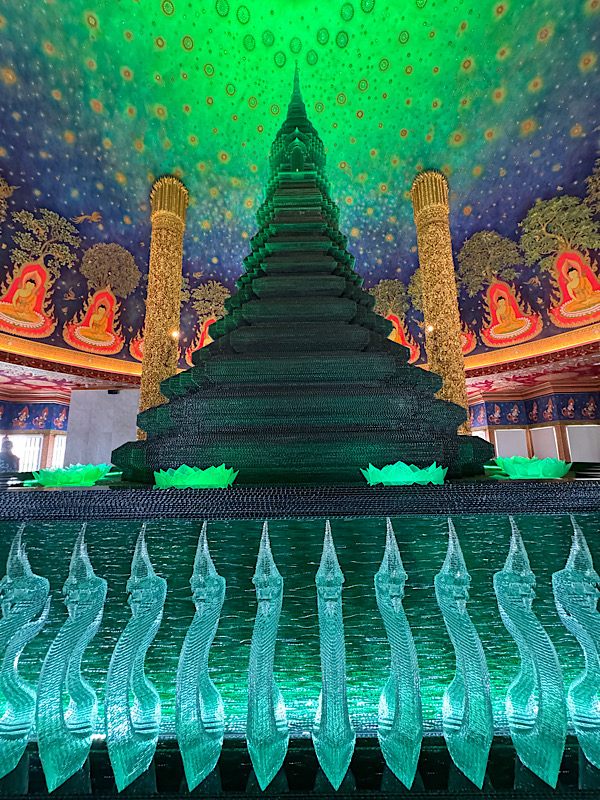
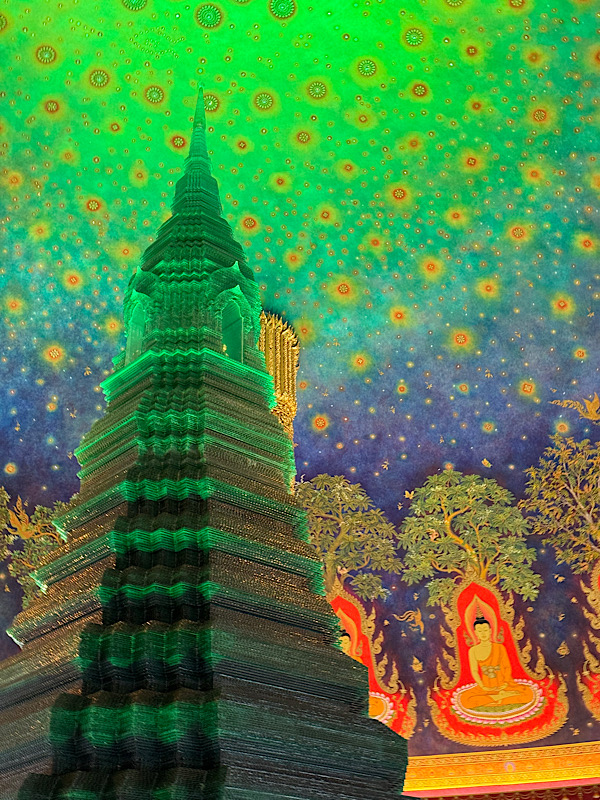
The photos don’t do justice to the sparkling way the light bounces around in this elaborate space – there are crystals embedded into the high domed ceiling that catch the light and make it look like a striking twinkly sky. There is also an observation deck on this floor where you can go outside the temple and walk around to see the surrounding area. You get a great view of the BBB (Big Buddha’s Booty!) from up here, as well as the Small Buddha across the canal (Big Buddha as it once was).
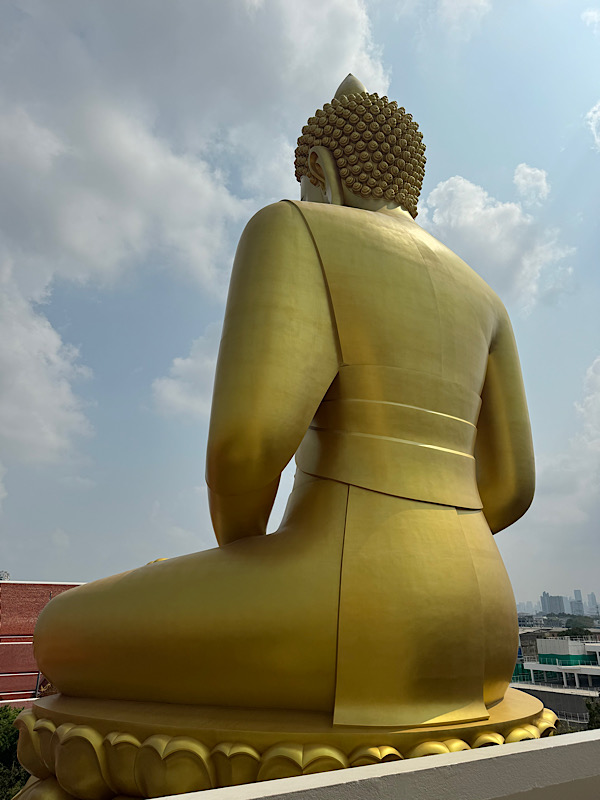
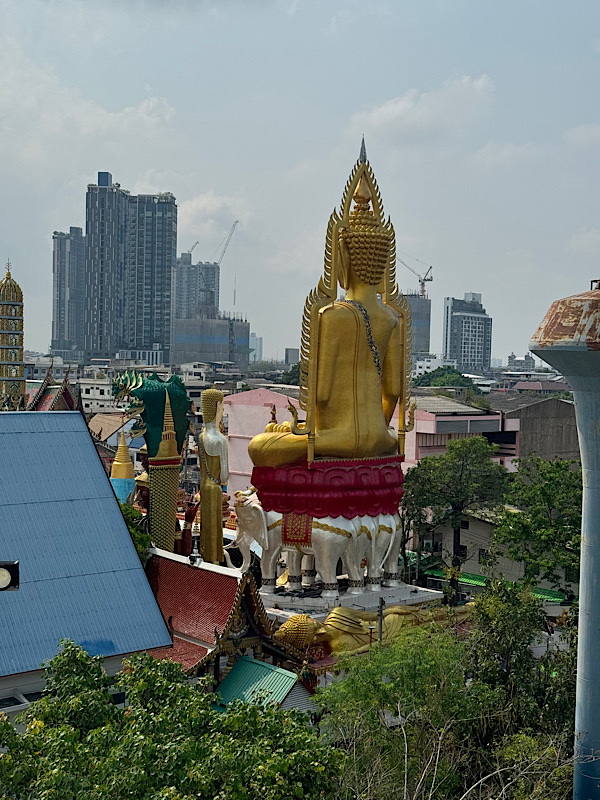
Apparently not many people go visit the Small Buddha anymore – and we weren’t going to be any different as our short tour didn’t allow time to go across the canal and check it out. Poor neglected Small Buddha – will have to see if we have some spare time later in the week for that.
Meanwhile, downstairs one level on the 4th floor is a huge pile of gold plated statues made to commemorate many famous monks throughout history. They are all behind glass, and the one that is in it’s own glass box is make from 112kgs of gold. Which is just mind boggling when you can look off the roof here and see the most heartbreaking poverty. :/
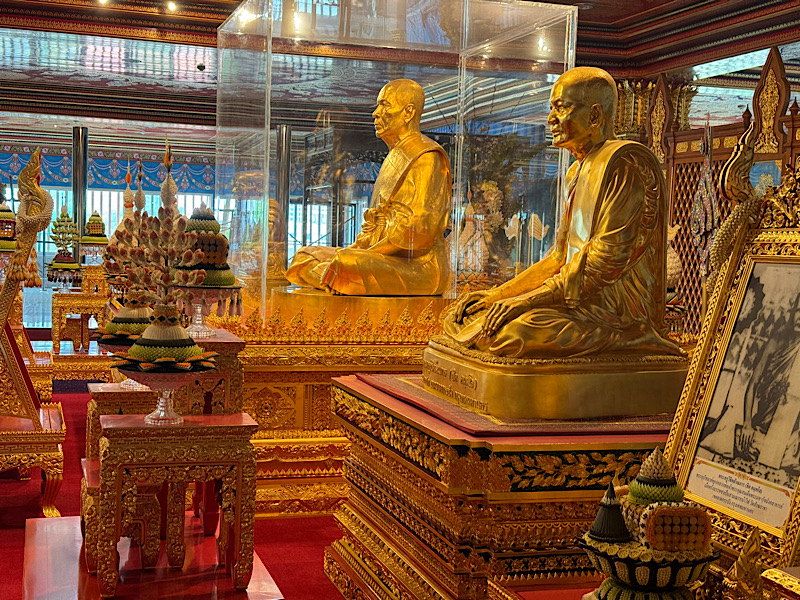
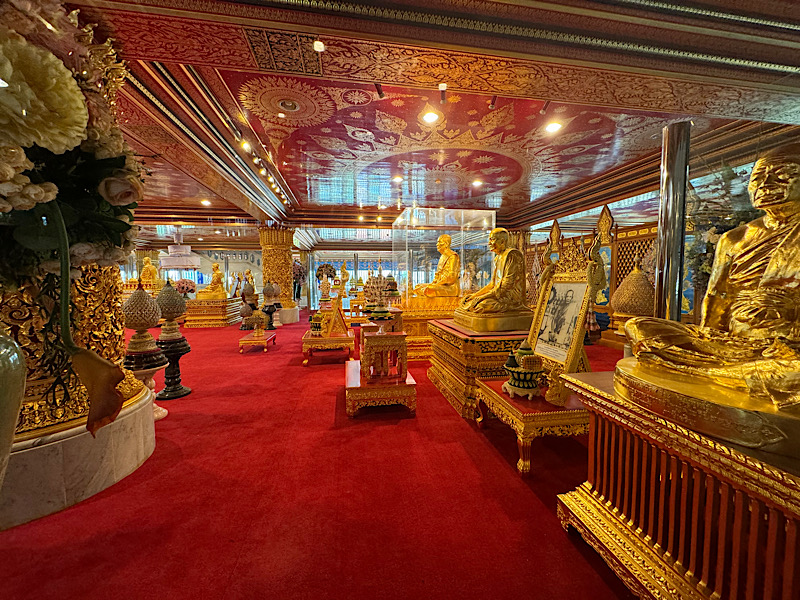
Back in our boat, we said goodbye to Big Buddha and set off for a loop around the canals before heading to the Artist House…
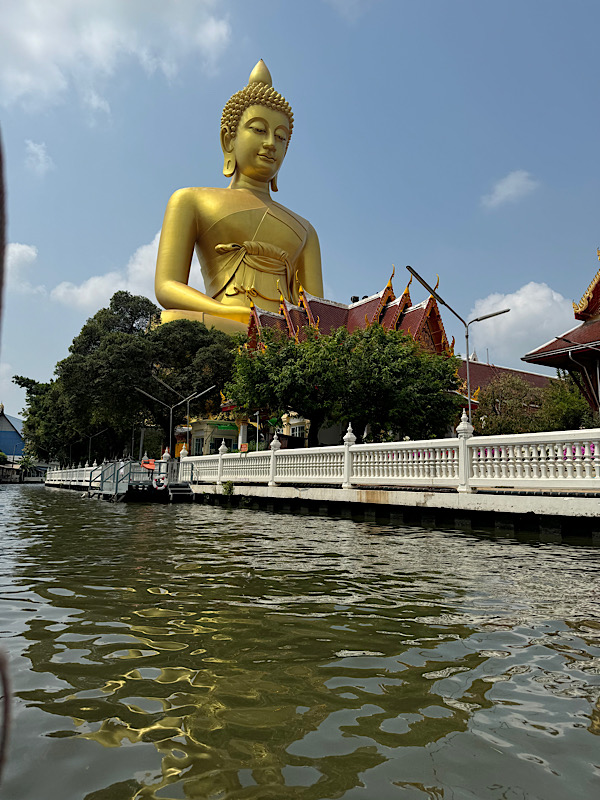
Some average canal front properties on our route…
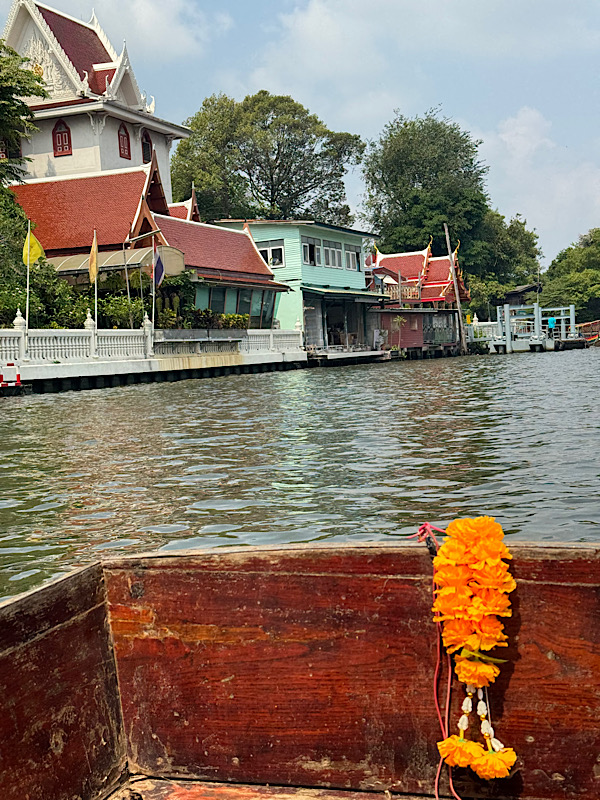
Mr Tee twice told us that Bangkok is all islands and is known as the ‘Venice of the East’… why, I do recall a St Petersburg guide once telling us that St Petersburg is the ‘Venice of the North’ – seems to be a popular moniker to want to adopt.
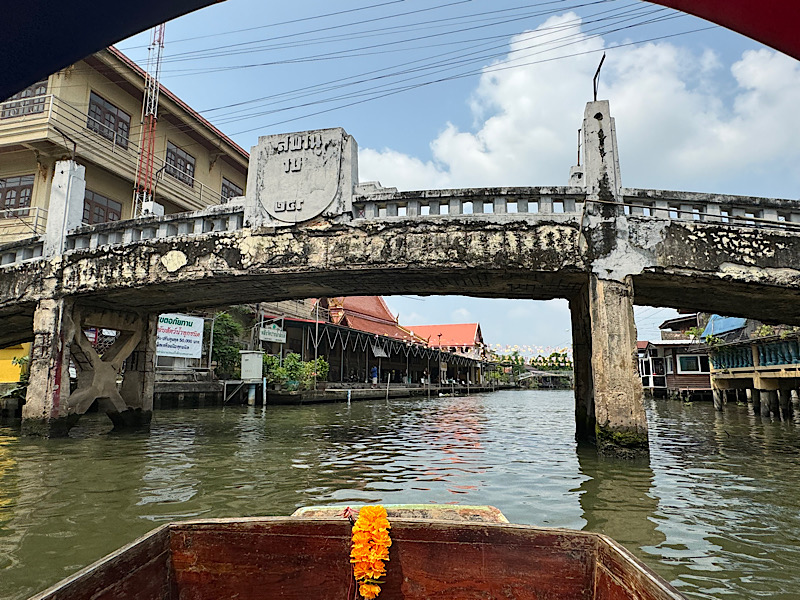
I just love these bright coloured garlands that are adorning the front of the canal boats. I hope they make the spirits as happy as the people seem to think they do; but even more entertaining than the garlands is the engines that are on these things…
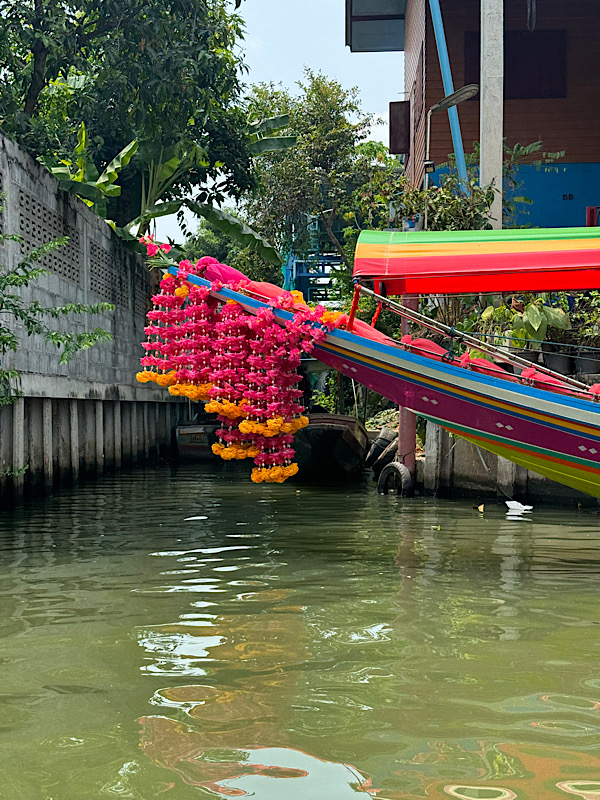
All these canal boats are running on 150hp truck engines. They are noisy and dirty, but powerful and do the trick. The long propellers are because the canal waters are, at maximum during high tide, 3m deep and the boat drivers usually only put the propellers in about 1m deep to avoid damage and getting entangled in water plants etc. This gives them a fair bit of speed and manoeuvrability.
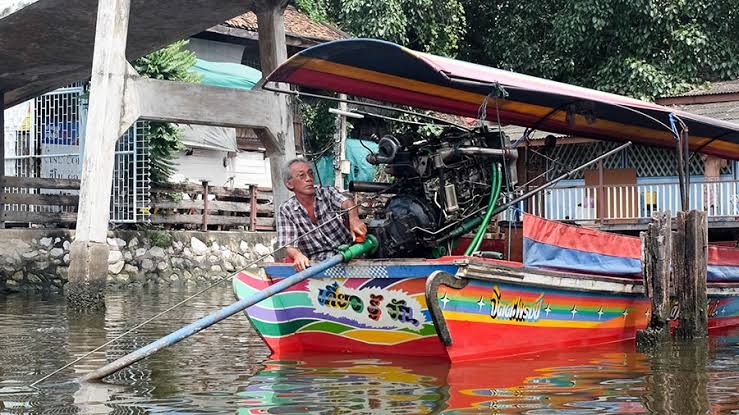
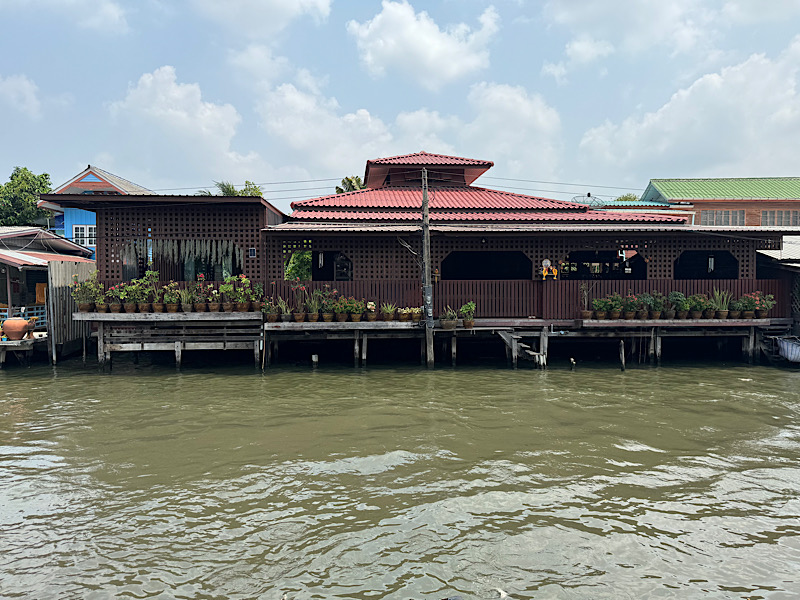
The Artists House seems to have been the place of a thriving art community prior to Covid, but is now turned somewhat touristic. Rather than artisans working here and showing their skills, it is a come and DYI place to make beaded necklaces and bracelets or to paint ceramics. There is even one shop here which has the tourist market covered by the clever use of … air conditioning! The shop is the only one with AC, and they charge ‘crazy prices’ to come in and work in their art shop but the tourists’ dollars go a long way here, and now the shop owner ‘is gotten too snobby for his boots’ so the local community don’t like him anymore. lol
In lieu of making Swiftie friendship bracelets, we chose to feed some fish – you could see them breaking the surface of the water the whole time we were cruising the canals, but because the water is so murky, couldn’t really seem them. Noted, fish feeding: ok. Bird feeding: not ok.
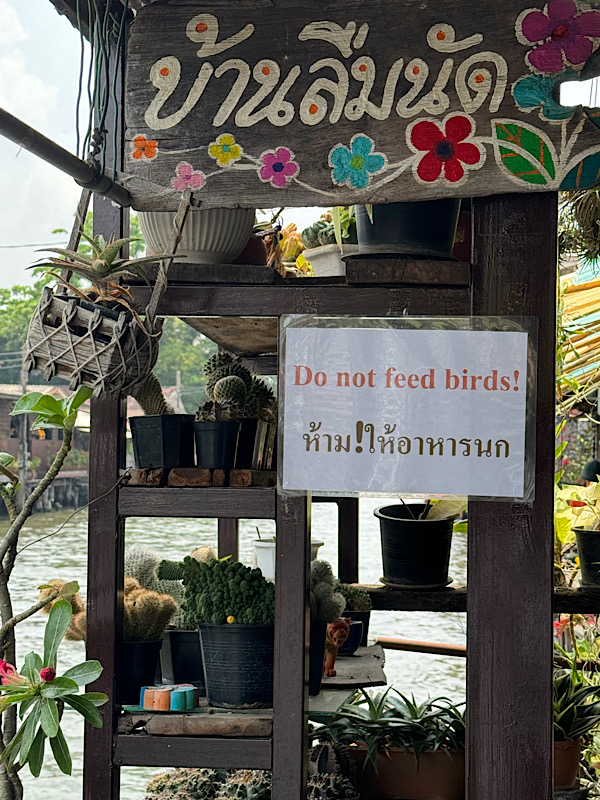
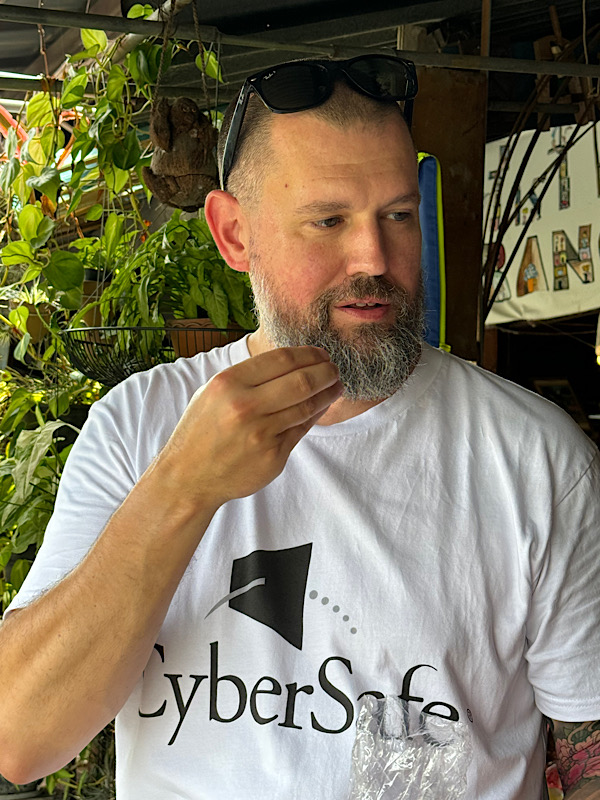
Someone forgot to tell Shannon, the food is for the fish. God I hope he didn’t actually eat any. Once we did chuck some fish food into the water – it was like watching piranhas in a tank under a suspended Adam West’s Batman c.1975! Vicious looking little fuckers fighting for the pellets – carp and catfish live quite happily in the brackish water of the canals.
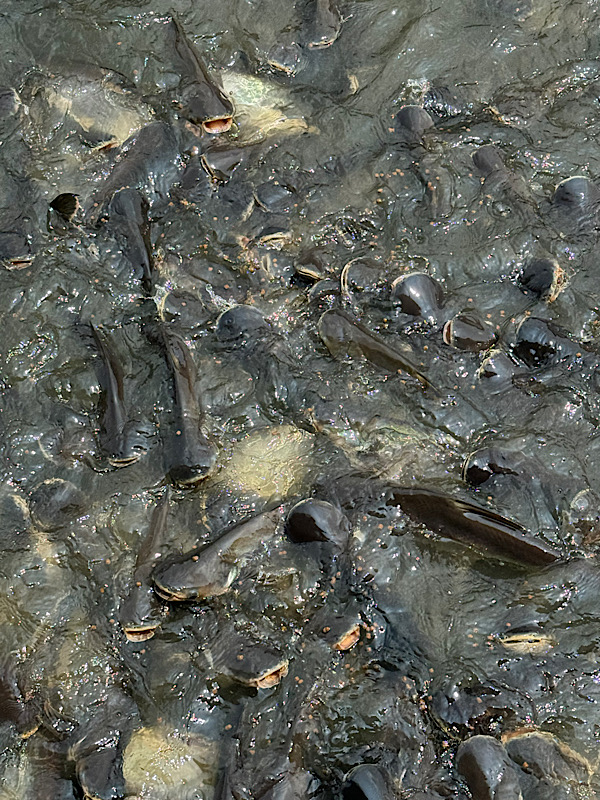
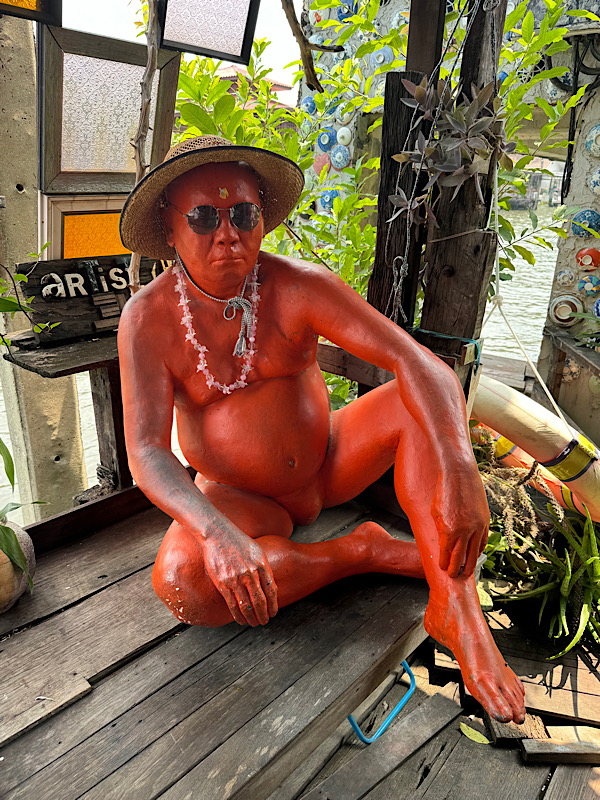
I have no idea what this orange man was about – and didn’t hang around long enough to find out as we found a coffee shop so the guys could get an iced coffee.
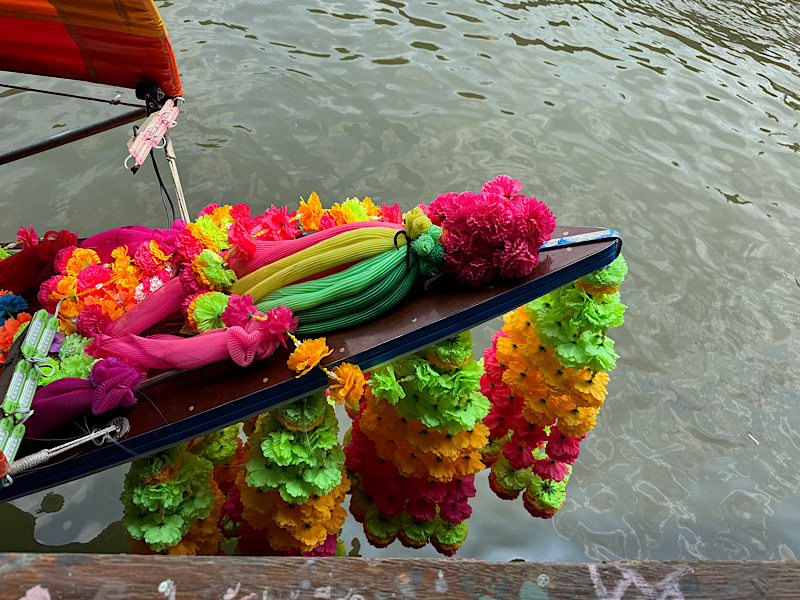
I think this bright coloured crispy looking shit is meant to be edible? But seeing as it looks like food coloured packing peanuts, we stayed the hell away from it.
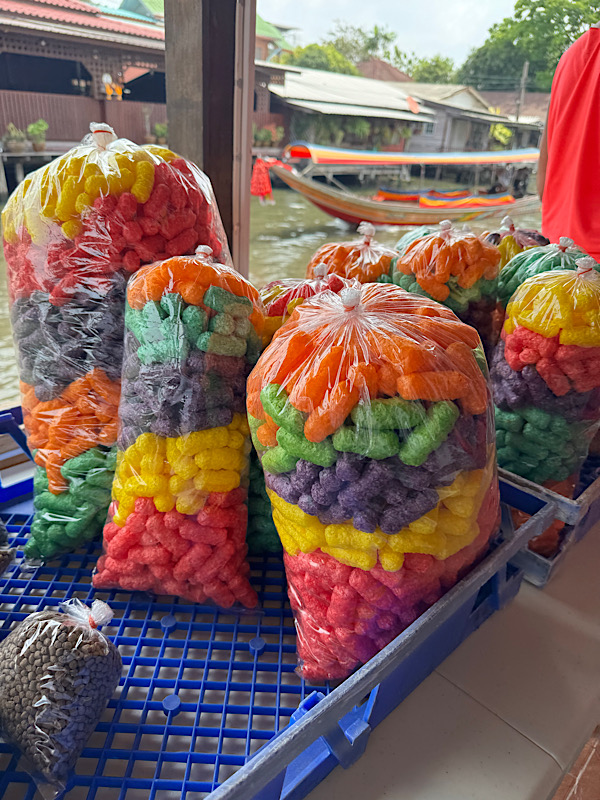
Mr Tee making himself comfortable on Shannon’s lap while playing more Thai dirty word bingo over coffees.
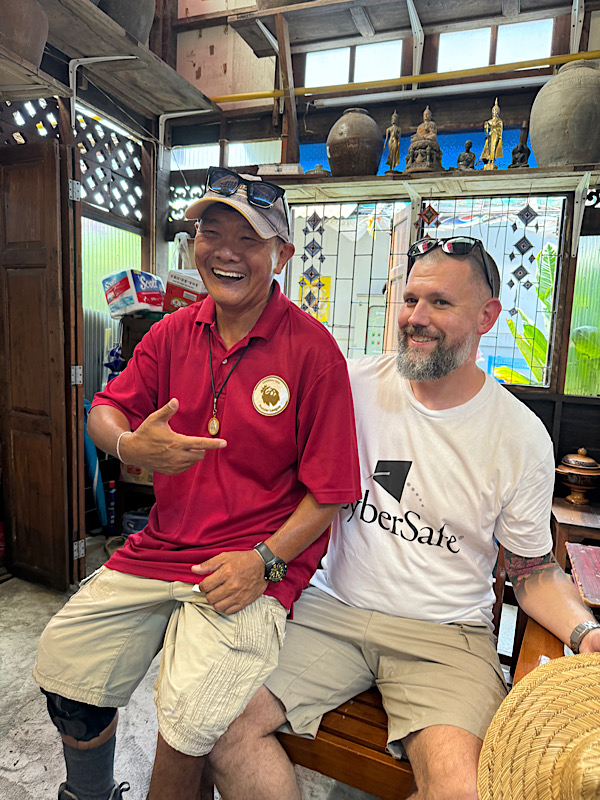
After our visit to the Artist House, we went back to our original meeting point near the Skytrain so we could ride back to our hotel. I wanted to take a cab because I’d already twisted my already fucked up knee getting in and out of the boat all morning – but the train was ‘right there’ so off we went like fucking idiots. Big mistake for me. The Skytrain is a fast, efficient, clean, air conditioned elevated rail system… love everything about it. Easy to understand, pleasant to rid. Not always user friendly… the station we got on at had a lift and it takes you about four stories above the ground to get to the train, but then the station we got off at – did not. And I found myself limping down about 8 flights of stairs. Le sigh… at least I got myself a Rabbit transit card.
